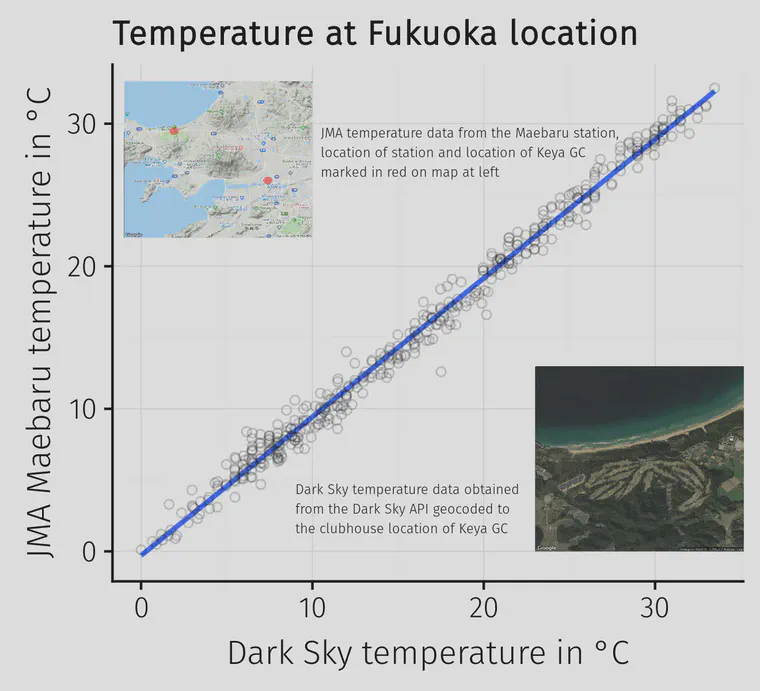Is it temperature or day length?
Andrew McDaniel asked me if day length or temperature has a bigger effect on zoysiagrass going into or coming out of dormancy. I hadn’t really thought about that before. When I did think about it, I realized I pretty much only think of temperature, but I wondered if living in a tropical location where the grass doesn’t go dormant might be blinding me to something that happens where day length varies.
I geocoded the locations of Keya GC in Fukuoka Japan; Blessings GC in Fayetteville, Arkansas; Vestavia CC in Birmingham, Alabama; and Augusta CC in Augusta, Georgia. One can calculate day length from latitude and day of the year. Keya and Vestavia and Augusta are at almost identical latitudes.

I told Andrew to please check the chart and see if the grass going dormant or waking from dormancy seems to coincide with certain day lengths.
Then I looked up the temperature data for those locations using Dark Sky. To check that the Dark Sky temperature data are accurate, I compared temperatures from the JMA (Japan Meteorological Agency) station at Maebaru, which is the closest JMA station to Keya GC, with the Dark Sky data for the latitude and longitude coordinates of the Keya clubhouse.

That looks pretty good.
I then got the temperature data from January 1 of 2018, up until yesterday, for each of the geolocated golf courses.

Temperature seems to match the dormancy period pretty well, and as far as I can tell this is sufficient to explain when the zoysia will go dormant or will break dormancy. If anyone knows otherwise, please correct me.
Plots of the temperature-based turfgrass growth potential (which I haven’t shown here) can be a clear way to see those temperature data in a more defined way, separating the dormant season from the growing season.
Soil temperature may have something to do with it too, but soil temperature is easily predicted from air temperature.